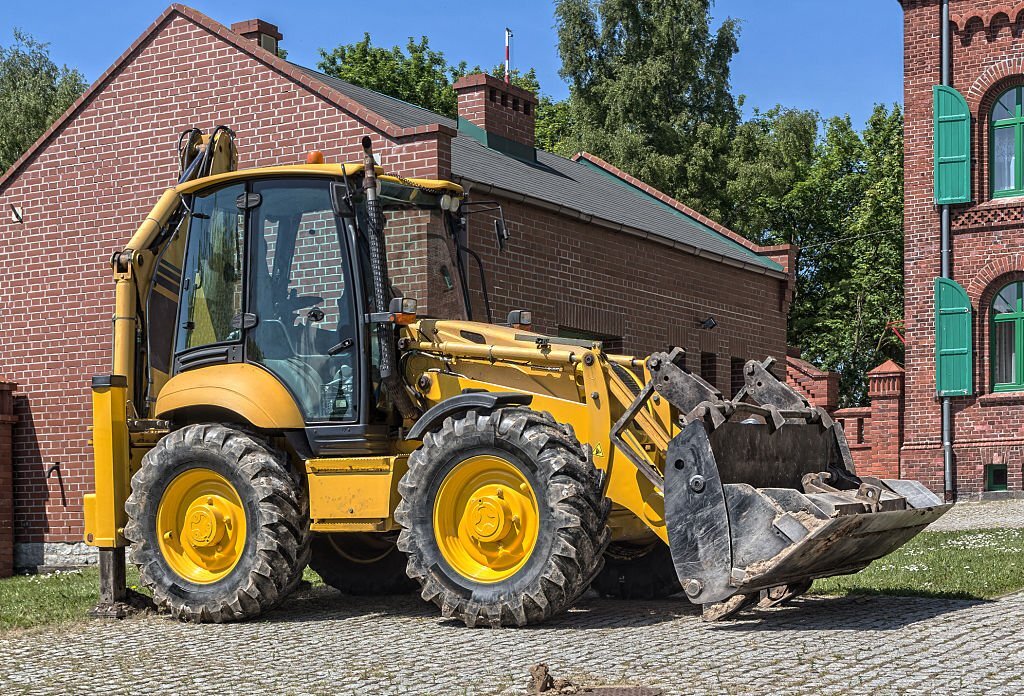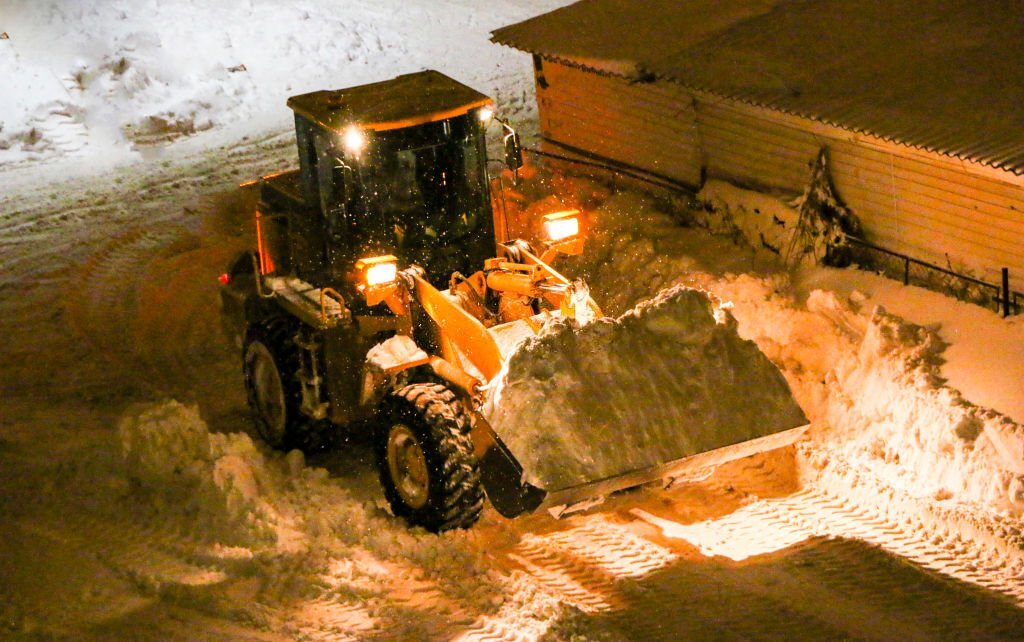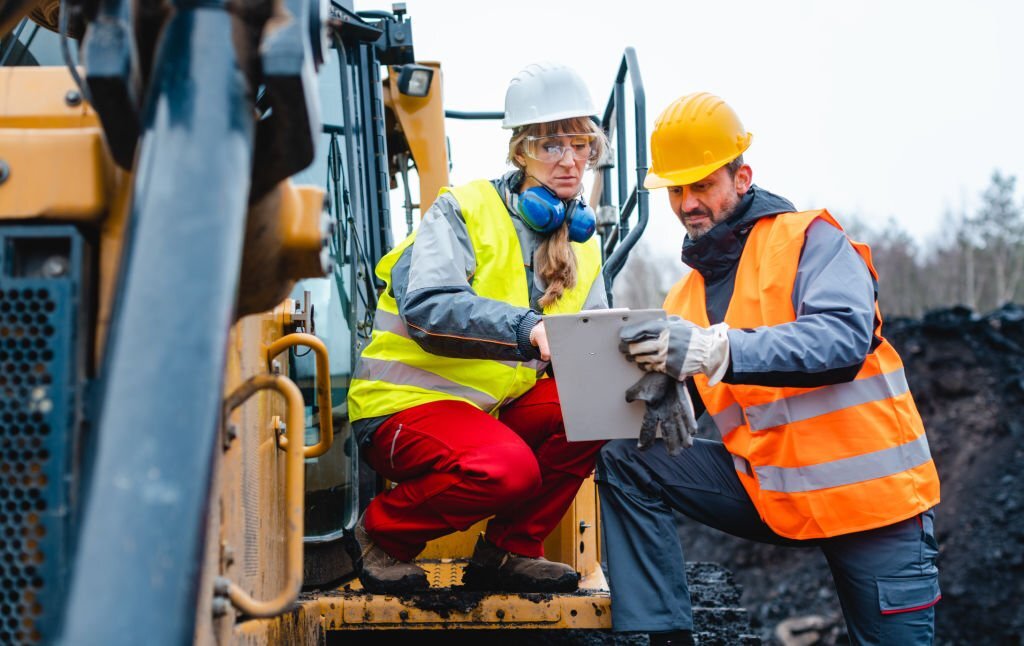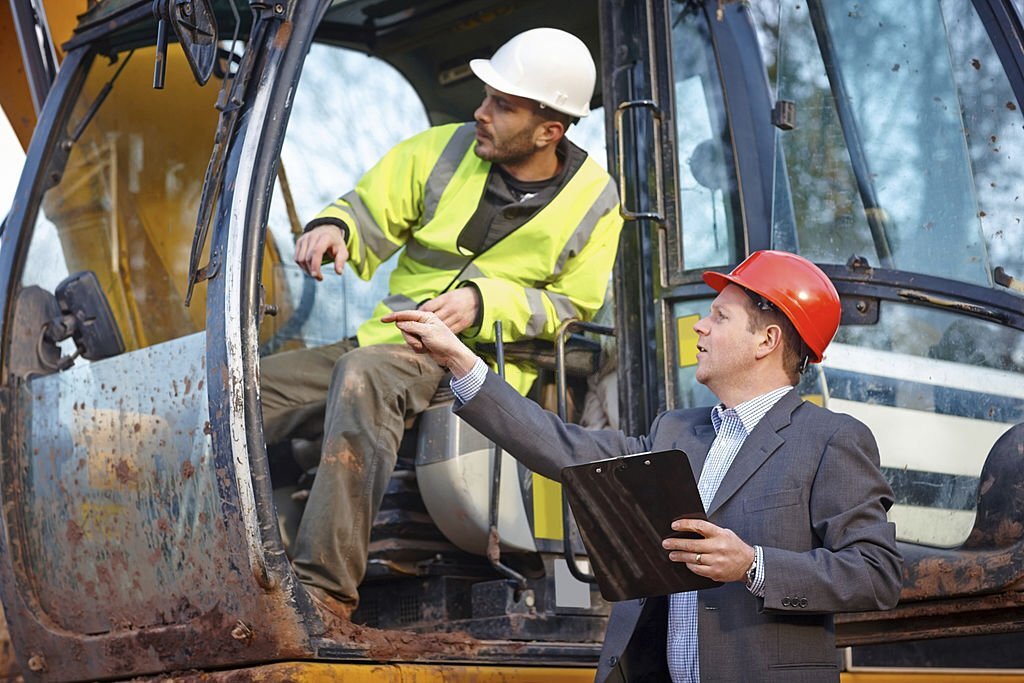
The construction industry has witnessed remarkable advancements in recent years, particularly in the realm of automation and artificial intelligence technologies. These developments have revolutionized the way bulldozers operate, enhancing their capabilities and efficiency.
Bulldozer automation refers to the integration of various technological features designed to automate tasks traditionally performed by human operators. On the other hand, artificial intelligence technologies enable bulldozers to understand, learn, and make decisions based on complex algorithms and data analysis.
A New Era of Automation
Bulldozer automation represents a significant paradigm shift in the construction industry. Traditionally, these powerful machines were operated manually by skilled operators who were responsible for controlling every movement and action.
However, with advancements in technology, bulldozers are now equipped with an array of sensors, computers, and intelligent systems that can autonomously perform tasks with minimal human intervention. Furthermore, artificial intelligence technologies have paved the way for bulldozers to possess a level of cognitive ability previously unimaginable.
These breakthroughs enable them to analyze vast amounts of data from their surroundings, make informed decisions autonomously, or assist human operators effectively. By combining automation and artificial intelligence technologies into bulldozers’ functionalities, construction companies can experience improved productivity, and safety measures while reducing labor costs.
The Significance of Advancements
The advancements in bulldozer automation and artificial intelligence technologies hold immense significance for the construction industry as a whole. Firstly, they contribute to enhancing overall efficiency throughout construction projects by accelerating processes that would otherwise be time-consuming if performed manually. Automated features such as GPS-based guidance systems allow for precise navigation around worksites while minimizing errors during grading operations.

Secondly, these advancements significantly improve safety within construction sites by reducing potential risks associated with manual operation. With automation taking over repetitive or hazardous tasks like material movement and grading, the risk of accidents and injuries to human operators is considerably reduced.
Bulldozers equipped with artificial intelligence technologies can also identify potential obstacles or hazards within their environment, further enhancing safety measures. Advancements in bulldozer automation and artificial intelligence technologies positively impact project costs.
By reducing the need for manual labor and increasing operational efficiency, construction companies can save both time and money. Additionally, the ability to monitor bulldozer performance remotely through telematics systems enables proactive maintenance and timely repairs, thereby minimizing equipment downtime.
Overview of Bulldozer Automation
Evolution of Bulldozers and their Role in the Construction Industry
Bulldozers have come a long way since their inception in the early 20th century. Originally designed to clear and level land, these powerful machines quickly found their place in the construction industry due to their versatility and strength.
The evolution of bulldozers has been marked by continuous advancements in technology, leading to increased efficiency and precision. In the early days, bulldozers were operated solely by skilled operators who manually controlled every movement of the machine.
However, as technology progressed, automation became a key focus for manufacturers. Today, modern bulldozers are equipped with advanced automation systems that revolutionize the way they operate on construction sites.
Introduction to automation in bulldozers
Automation in bulldozers refers to the integration of sophisticated technologies that enable certain tasks to be performed without direct human intervention. This involves utilizing various sensors, GPS systems, telematics, and artificial intelligence algorithms to automate specific functions of the machine. One fundamental aspect of automation is remote control operation.

This feature allows operators to control bulldozers from a safer distance using advanced remote control devices or even through computer interfaces. By eliminating the need for an operator inside the cab, this automation feature significantly improves safety on construction sites where hazardous conditions may exist.
Basic automation features such as remote control operation
Remote control operation is one of the most basic yet impactful forms of automation present in modern bulldozers. This technology allows operators to have precise control over various functions without physically sitting behind the controls inside the cab.
The remote-control devices are equipped with joysticks or touchscreens that provide real-time feedback from sensors onboard. The advantages of remote-controlled operations are multifold.
Firstly, it ensures enhanced safety by allowing operators to work from a safer distance, away from potential hazards like falling debris or unstable terrain. Additionally, remote control operation enables increased productivity as operators can efficiently maneuver the bulldozer without the limitations of being inside the cab.
This becomes especially beneficial in situations where visibility is compromised, such as during operations involving large mounds of earth or in hazardous environments. Overall, automation features like remote control operation have revolutionized the way bulldozers are operated in the construction industry.
These advancements not only enhance safety but also increase efficiency and productivity on job sites, ultimately leading to improved project timelines and cost-effectiveness. With this brief introduction to bulldozer automation, we will now delve into more advanced technologies that have further pushed the boundaries of what these machines can achieve.
Advancements in Bulldozer Automation Technologies

GPS-based Guidance Systems
Bulldozers have witnessed a remarkable transformation with the integration of GPS technology, revolutionizing their precision and navigation capabilities. GPS-based guidance systems enable bulldozers to operate with unparalleled accuracy, eliminating the need for manual surveying or staking.
These systems employ satellite signals to provide real-time location data, allowing operators to precisely navigate through complex terrains and follow pre-defined pathways effortlessly. By leveraging the power of GPS, bulldozers can now carry out tasks more efficiently, reducing operator fatigue and enhancing overall productivity.
The benefits of GPS guidance systems extend beyond improved accuracy. With these advanced technologies in place, operators can focus more on monitoring tasks rather than constantly adjusting the blade’s position or worrying about veering off-course.
Moreover, these automated systems streamline operations by eliminating human errors related to positioning and leveling. Consequently, projects are completed faster and with better precision, leading to significant time and cost savings in construction endeavors.
Telematics and Fleet Management Systems
Telematics technology has revolutionized the way bulldozers are monitored and managed remotely. By utilizing a combination of telecommunications and informatics tools such as embedded sensors and GPS receivers, telematics systems enable real-time tracking of bulldozer locations, performance metrics, fuel consumption rates, maintenance needs, and much more. This wealth of data is then transmitted to a central management platform where it can be analyzed for insights that drive informed decision-making.
Fleet management systems play a crucial role in optimizing bulldozer performance and maintenance schedules by leveraging the data provided by telematics technologies. Operators can remotely monitor equipment usage patterns to identify potential bottlenecks or inefficiencies in workflows that may impact productivity.
Additionally, predictive analytics algorithms can assess machine health parameters based on historical data trends to predict maintenance needs accurately. By adopting proactive maintenance strategies, fleet managers can reduce unplanned downtime and maximize the lifespan of bulldozers, ultimately leading to improved operational efficiency and reduced costs.
Intelligent Machine Control (IMC)
Intelligent Machine Control (IMC) represents a remarkable leap forward in bulldozer automation technology. IMC combines the power of GPS, sensors, and artificial intelligence to enable unprecedented levels of automation and precision in grading operations.
With IMC, bulldozers can autonomously control their blades’ movements based on real-time data received from various sensors, ensuring precise grading without constant operator intervention. The benefits of IMC extend beyond automated blade control.
These systems also provide operators with 3D models and real-time feedback on their work progress, enabling them to make informed decisions without relying solely on their intuition or experience. By visualizing the terrain in detail through these systems’ interfaces, operators gain enhanced situational awareness that facilitates more efficient maneuvering and reduces the risk of accidents or damage to surrounding structures.
Artificial Intelligence Technologies in Bulldozer Automation

Machine Learning Algorithms
Machine learning algorithms play a crucial role in analyzing data collected from various sensors installed on bulldozers. By processing large volumes of complex data sets such as engine performance parameters, hydraulic pressures, temperature readings, and more, these algorithms can identify patterns and correlations that are otherwise challenging for human operators to detect. Such insights allow for predictive maintenance strategies where machines can indicate maintenance requirements before critical issues arise.
Moreover, machine learning algorithms assist in optimizing fuel consumption by analyzing historical data patterns with respect to operating conditions and fuel usage rates. This enables the development of intelligent fuel management systems that provide recommendations on optimal operation parameters for minimizing fuel consumption while maintaining productivity levels.
Computer Vision Systems
Bulldozers equipped with computer vision systems possess an impressive ability to “see” their surroundings, thanks to cameras and sophisticated image recognition algorithms. These systems analyze real-time visual data to identify objects, obstacles, and terrain features in the bulldozer’s path.
By detecting potential obstacles such as rocks or debris, computer vision systems enable automatic adjustments in the bulldozer’s path or trigger alarms for operator attention. Furthermore, computer vision enables autonomous path planning by creating accurate digital representations of the terrain ahead.
Algorithms process data from multiple cameras and sensors to generate 3D environment maps that guide bulldozers through complex terrains while avoiding potential hazards. This autonomous capability enhances operator safety and productivity and reduces the risk of accidents during construction operations.
Natural Language Processing
While still at an early stage of implementation in bulldozer automation, natural language processing (NLP) holds great promise for facilitating human-machine interactions. NLP techniques enable bulldozers to understand and respond to voice commands or perform tasks based on verbal instructions given by operators.
By integrating NLP capabilities into bulldozer automation systems, operators can communicate more intuitively with their machines without relying on complex control panels or interfaces. This streamlines operation and reduces the cognitive load on operators who can focus more on operational aspects rather than struggling with complicated control mechanisms.
Conclusion
The advancements in bulldozer automation technologies have profoundly transformed the construction industry’s landscape. From GPS-guided precision navigation systems to telematics-enabled remote monitoring and intelligent machine control technologies, these innovations have revolutionized how tasks are accomplished in construction projects.
Additionally, artificial intelligence technologies such as machine learning algorithms, computer vision systems, and natural language processing provide new capabilities that enhance safety, efficiency, and productivity. With these advancements driving progress within the industry, there is an optimistic outlook for the future of bulldozer automation.
As technology continues to evolve rapidly, we can anticipate even more sophisticated solutions that empower construction professionals with cutting-edge tools to meet the growing demands of complex projects. By embracing these advancements, the industry is poised to achieve unprecedented levels of productivity, cost-effectiveness, and sustainability while ensuring the safety and well-being of workers.

